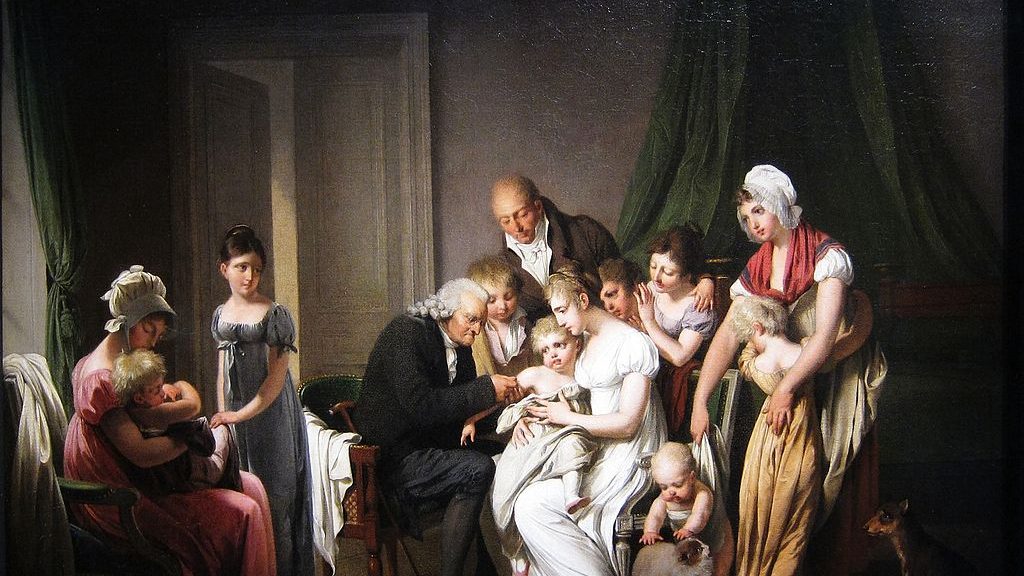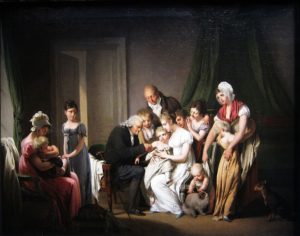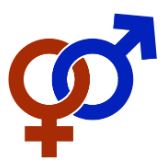‘If you want to find the secrets of the universe, think in terms of energy, frequency and vibration.’ Nikola Tesla.
Theme of the month: Contested theories
This monthly letter provides an introduction to theories commonly not accepted by the scientific community. The main part of the letter is devoted to describing some of these theories. The sentences in italics are intended to give the currently generally accepted scientific point of view.
Not all of the alternative medicines are dealt with in this letter. Notably, it does not cover:
- Yoga and other practices related to body movements and manipulations (gymnastics, dance, osteopathy…) and the attainment of modified states of consciousness (hypnosis, music …)
- fasting and all forms of dietary instructions (paleo diet, veganism, vegetarianism, …)
- aromatherapy and other theories related either to the ingestion of substances (phytotherapy, gemmotherapy, ingestion of clay, certain plants not used in the classical pharmacopoeia…), or to inhaling substances
- the therapeutic use of colors or crystals
- theories based on purely religious convictions (the therapeutic role of prayer, or miracles, …)
Chakras, meridians, …
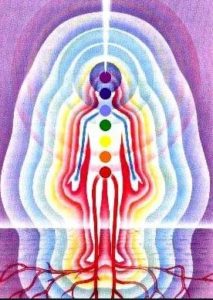 According to Eastern concepts our body has energy centers or chakras, located along our spinal column, which begins at the base of the sacrum, the “root chakra”, capturing telluric energies, and ending above the skull, through our “coronal chakra”, capturing cosmic energies. So we are said to be like a cosmo-telluric antenna. According to this way of looking at things, if all our chakras are well opened (through meditation, mindfulness, dance, yoga, energy massages or by using the sounds of Tibetan bowls), we receive enough energy, which can circulate and balance the whole body, thus maintaining good health.
According to Eastern concepts our body has energy centers or chakras, located along our spinal column, which begins at the base of the sacrum, the “root chakra”, capturing telluric energies, and ending above the skull, through our “coronal chakra”, capturing cosmic energies. So we are said to be like a cosmo-telluric antenna. According to this way of looking at things, if all our chakras are well opened (through meditation, mindfulness, dance, yoga, energy massages or by using the sounds of Tibetan bowls), we receive enough energy, which can circulate and balance the whole body, thus maintaining good health.
In electricity, the less resistance there is in a wire, the more energy it conducts. By cultivating serenity through meditation, a state of non-resistance is created in the body and more vitality can be felt.
Energy body medicine provides a holistic approach to health and longevity.
 According to traditional Chinese medicine, the body is traversed by a complex network of energy channels called “meridians”:
According to traditional Chinese medicine, the body is traversed by a complex network of energy channels called “meridians”:
In Chinese diagrams of the human body, these energy networks look like an electronic wiring diagram. Using acupuncture needles, Chinese doctors check their patients’ energy circuits just as engineers check electronic circuits to detect electrical “pathologies”.
For other alternative medicine advocates, it is the ear, or similarly, the hands and feet that are said to be connected to the organs of the rest of the body and the use of needles or massages in many of these organs is said to positively influence the functioning of the body.
According to present day scientific knowledge however, the existence of chakras, meridians and other energy links to the body cannot be proven and the therapeutic effects are not measurable.
Water is conductive
We know that our body is made up of more than 70% water. The quality of this water is therefore essential. Studies conducted by Masaru Emoto have shown that water has a “memory”. Depending on the intentions or melodies emitted, water does not form the same ice crystals, hence its structure differs according to the thoughts or music captured by the vibratory field of the water. The fact that water has a “memory” and is influenced by its past has been demonstrated by the doctor and immunologist Jacques Benveniste.
Water is a complex molecule with far more states than we generally think. However, no studies show a better state of health due to the use of water molecules with a specific past, as the assumptions of “water memory” are currently considered invalid..
Homeopathy
This is a branch of medicine according to which extremely diluted products have a therapeutic effect based on the principle of similarity. The basic idea, put forward by doctor Samuel Hahnemann in 1796, is that substances that cause disease in healthy subjects could cure sick people.
Homeopathic treatments have been and are used by hundreds of millions of people around the world, with a very high level of patient satisfaction and with doctors who are on the whole more attentive towards their patients. Homeopathic medicines are used even for animals with significant results.
The general scientific consensus (and verified by numerous experiments) is that homeopathic products have no other effect than a placebo. Moreover, their dilution is such that there is no longer any molecule of the active principle.
Vibratory medicine
When it comes to ancient knowledge, sound, frequency and vibration have always been perceived as powerful forces that can influence and modify life down to the cellular level.
Sound healing methods are often used by shamans, who use drums and singing to access trance states. Research has even demonstrated that drumming and chanting can be used to slow deadly brain diseases, and that they can generate a sense of unity with the universe.
Sound therapy can have many medical applications, particularly in the field of psychological and mental health. In repeated controlled experiments, the frequencies, known as the Oscillating Pulsed Electric Field (OPEF) technology, invented by Royal Rife, killed an average of 25 to 40% of leukemic cells, in some cases as much as 60%. What is more, the procedure even slowed the growth rate of cancer cells by as much as 65%.
Sound or other vibrations have, of course, physical effects and often effects on the body. However, there is no significant therapeutic use recognized by the majority of the scientific community.
Electrical biology
Thanks to magnetic resonance imaging, researchers at the University of Pennsylvania have found that certain proteins have an internal ‘vibration’ that pulsates billions of times a second. This revelation led to the conclusion that it is not only the complex folded shape of these molecules that influences their function, but their internal movement.
According to Dr Joshua Wand, “The situation is similar to the debate in astrophysics, where theorists predict that there is mysterious matter or energy that no one has yet seen”.
A book published in 2010 in Switzerland, Der Urzeit-Code, details experiments that show how a fluctuating electric field can alter gametes to the point of creating new species.
In these laboratory experiments, the researchers, Dr Guido Ebner and Heinz Schürch, exposed cereal grains and fish eggs to an “electrostatic field”. Unexpected primitive organisms were born from these seeds and eggs: a fern that no botanist could identify, primitive corn with a maximum of twelve ears per stem; wheat that was ready to be harvested in only four to six weeks. And a giant trout, with so-called salmon hooks, which has been extinct in Europe for 130 years. It was as if, in the electric field, these organisms had access to their own genetic memories on command, a phenomenon that the English biochemist Rupert Sheldrake, for example, considers possible.
Given what Der Urzeit-Code reports, it would not be an exaggeration to think that electric currents can resonate proteins at variable rates and thus change their behavior, or, by triggering a change in the state of the morphic fields, have a positive therapeutic effect.
The spectacular effect of electric currents on the development of various animals into adulthood was notably demonstrated in December 2018 by an American scientist, Michael Lewin.
The contemporary scientific community hardly uses electric currents for therapeutic purposes anymore and considers positive effects to be unproven. It should be noted that research in these areas is much less developed than in the past.
The placebo effect (and its opposite, the nocebo effect)
These effects are a proven consequence of our powers of autosuggestion. It shows that we can influence the physiological mechanisms of the body through thought. We live in a culture where antidepressants and many other medications work, in large part because people believe in them!
The placebo effect is not considered a false science or alternative medicine. However, it must be noted that the reasons for effectiveness lie essentially in the “power of the mind” without a precise demonstration of the mechanisms involved. The placebo effect is only scientifically recognized because it has been measured countless times.
The power of the mind and quantum biology
According to Bruce Lipton, our health is determined not only by our DNA but by our environment and the power of our thoughts and beliefs.
Here is a summary of what he said about this new vision of biology:
There are today, two systems of thought with regard to human biology, one based on physical reality, according to which everything in the universe is made of matter; it is a Newtonian vision of conventional medicine. The other vision is based on quantum physics; it assumes that the universe is made of energy and that everything that we consider to be matter is in reality energy.
The main difference between the two is that invisible forces play a key role in the new vision of biology.
The current approach towards genetics has changed significantly. The old approach that had been learned and taught was called genetic determinism. According to this, our genes determine not only our structural characteristics but also our physical, emotional and behavioural characteristics so that our lives reflect our genetics.
There is a new science called epigenetics. “Forty years ago, I saw for the first time what this consisted of in my stem cells in culture. I had identical cells in 3 boxes but I changed the environment of each one, giving rise to tissues from different organs. This notion of environmental control over genes is epigenetic control.”
Our world view is fundamental because our perceptions are transformed into substances that control our behavior and genetic expression. Research combining quantum physics, electrical engineering, chemistry and biology is particularly relevant, as it could lead to therapies with far fewer side effects than drugs. However, this research will confirm what scientists and non-scientists already “know”, without having realized it: every organism, including humans, communicates with its environment and decodes it by evaluating the energy fields.
Since humans are closely dependent on spoken and written languages, they have neglected their energy sensors as a communication system. As with any function, non-use leads to atrophy. Aborigines still use this hypersensitive function on a daily basis and there is no sensory atrophy in them. Thus, they are able to feel the water buried deep in the sand. As for the shamans of the Amazon, they communicate with the energy of medicinal plants.
Knowledge of epigenetics related to longevity was addressed in a letter of June 2019. The past influence of the external environment is well-established and strong at the epigenetic level. But the influence of quantum fields or other energies is unproven.
In conclusion
A healthy lifestyle that allows our energies to flow in a balanced way, and positive thoughts promote our health and longevity.
This state is both beneficial for expressing good genes (such as tumor suppressor genes) and inhibiting the expression of “bad” genes such as inflammation, certain cancers or autoimmune diseases,…
Aging without the symptoms of age is what energy medicine, epigenetics and quantum biology teach us, showing us how to regain control of our health. It is a way to rethink our capacities while benefiting from new current health research and a more global vision.
All the theories described above are considered by most of the scientific and medical community as invalid for two main reasons:
- the absence of accepted evidence of the mechanisms that occur;
- the absence of evidence of therapeutic effectiveness.
It is also true that alternative therapies are very often sold to suffering people for profit. Products for better health and a longer life have been sold to the powerful and the poor for millennia. However, conventional pharmaceutical products are also sold for huge amounts and the scientists who create them are also motivated by financial gain. In many cases, they also do not hesitate to sell products whose effectiveness is questionable.
Science has made immense progress, but scientists must remain humble with regard to medical progress, especially in longevity. In A.D. 6, Cicero’s widow, Terentia, died at the age of 104. In 2019, Kane Tanaka, the oldest woman on the planet, is only 12 years older and does not dance the tango every day.
Some alternative research approaches could be tested according to recognised scientific criteria, notably with double-blind experiments. The space given to “non-conventional” research can be linked to attention to everything that is unexpected, to an attitude favourable towards serendipity. However also knowing that the same applies to the claims of alternative medicines and research as to the claims of “conventional” scientific medicines and research: today, nothing still works beyond a little over 110 years, no matter how beautiful the theories may be, how powerful the declarations may be, how unusual or not the ideas may be and how much money may be invested. And this despite the fact that the objective may well be within our reach.
The good news of the month: progress is accelerating in genetic ‘editing’
According to an article published in Nature on October 21, two American researchers, David Liu and Andrew Anzalone, discovered a genetic modification tool that is more efficient and accurate than CRISPR techniques. Thanks to a new enzyme (the result of the fusion of two other enzymes including the CAS9 enzyme), a very specific area of the DNA can now be “edited” or “rewritten”, without the need to cut the DNA strand.
According to the article, the researchers have already tested this method on human cells in vitro and have perfectly carried out 175 genetic modifications on cells affected by various diseases.
This new step in a rapid evolution also opens up potential opportunities for “positive” gene therapies, for improvement and not only for the fight against genetic diseases.
To find out more:
 Some say that the value of life comes from its brevity. And yet children have their whole life ahead of them. Do you see in young people a lack of willpower, a form of boredom? Sometimes perhaps, but less so than in adults.
Some say that the value of life comes from its brevity. And yet children have their whole life ahead of them. Do you see in young people a lack of willpower, a form of boredom? Sometimes perhaps, but less so than in adults.

 air of the metropolis, the inhabitants of the then miserable and overcrowded neighborhoods are dying in their hundreds from cholera. No one yet knows that it is a bacillus that is killing people, and among the most competent scientists many believe that it is the “pestilential” air (literally meaning “plague carrying”) that carries something that triggers the disease.
air of the metropolis, the inhabitants of the then miserable and overcrowded neighborhoods are dying in their hundreds from cholera. No one yet knows that it is a bacillus that is killing people, and among the most competent scientists many believe that it is the “pestilential” air (literally meaning “plague carrying”) that carries something that triggers the disease.


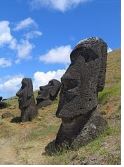


 According to
According to 